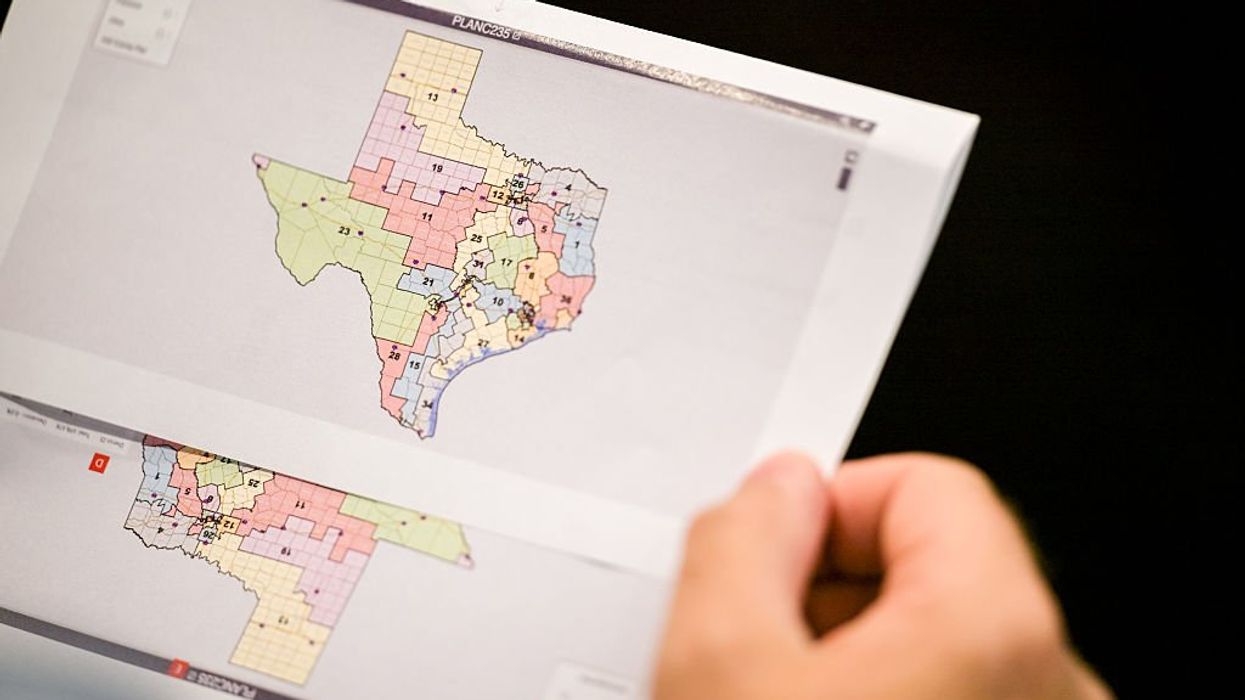The fight over congressional redistricting in Texas continues to simmer. Democratic state representatives fled the state to block the passage of a rare mid-decade, Republican-drawn map that would give the GOP an additional five seats in the U.S. House of Representatives if put into effect before the midterms. In response, Governor Greg Abbott threatened to remove the absent members from their seats and arrest them.
The Texas Democrats responded with “come and take it,” an overt reference to a slogan from the Texas Revolution. Illinois Governor JB Pritzker, who welcomed the fleeing Texas legislators to his state, called Abbott a “joke.”
This all makes for great political theater, if you’re into that sort of thing. I certainly remember being fascinated when the Texas Democrats fled to New Mexico to avoid redistricting in 2003, when I was an undergrad at UT Austin.
Now, as a professor of U.S. legal history—and a California voter—I’m less fascinated and more frustrated by the long-standing, systemic inequities of congressional representation and redistricting. Unless and until we confront the historic roots of those inequities, redistricting drama will not only persist, but almost certainly intensify.
The U.S. Constitution stipulates that representation in the House is based on a state’s population, which is determined by the census taken every ten years (which is why mid-decade redistricting is rare), and that each state must have at least one representative. Originally, the plan was to have no more than one representative for every thirty thousand people, and as James Madison explained in Federalist 54, each should have “an equal weight and efficacy.”
After ratification, apportionment quickly became political in ways the framers did not anticipate. For instance, the development of political parties changed the calculus by incentivizing skewed district mapping. “Gerrymandering” emerged in 1812 and, like the party system itself, has become increasingly sophisticated over time. In class, I use North Carolina’s districting maps as a 21st-century example of the practice.
The politics of slavery also complicated apportionment. The infamous three-fifths clause inflated the population of slave states and thus the number of representatives they would have. (To be clear, it did not represent bondspeople as fractional people; it added a bonus to the population of citizens eligible for representation.) Anti-slavery activists regularly decried the unfair political advantage the clause provided to southern states.
While the clause was overridden by the 14th Amendment, race-based disfranchisement continues to influence redistricting. Indeed, Texas Democrats specifically charge that the proposed GOP map intentionally reduces the political power of non-white voters.
Perhaps the greatest structural impediment to equitable representation, however, is the limit on the size of Congress. The Reapportionment Act of 1929 permanently capped House membership at 435. Functionally, this means that rather than increasing the number of representatives as the U.S. population grows, we just shuffle the existing 435 seats around.
As the kids say, this means that the math isn’t mathing. Consider the most acute example: Wyoming, the least populous state, compared to California, the most populous. If CA apportionment were equitable with WY, it would need an additional 17 representatives. By the same rule, Texas would require a 13-seat increase. As it stands, voters in some states have more relative power than others.
So far, much of the response to the Texas redistricting simply reinforces these fundamental structural problems. Democratic organizations have called for blue state redistricting to counteract Texas’s gerrymander, and Governors Gavin Newsom of California and Kathy Hochul of New York have suggested they will take steps to do so.
This fighting fire with fire approach adds dramatic flair to the contest, but it does nothing to promote sustainable democratic equity or address the fundamental math problem.
Instead, to get closer to the Constitution’s original vision for proportional representation, several things must happen.
First, eliminate the cap on the number of representatives. While using the smallest state as the benchmark may not be the ideal solution, allowing the House to align with the population is essential for parity. Where you live should not determine how much power your vote has.
Second, implement independent districting commissions nationwide, as four states already use. This would ensure a fairer allocation of representatives and prevent either party from benefiting unduly from an increase in House seats. Red states would see an increase in blue districts, and vice versa.
Polling suggests this is a popular idea; nearly sixty percent of Americans support adopting nonpartisan redistricting commissions. And, absent strong federal voting rights protections, independent districting offers the best chance of blunting racially-motivated disfranchisement.
Finally, politicians and voters critical of politicized map manipulation need to change the terms of the redistricting debate. The patchwork approach to redistricting and apportionment is structurally unfair, contrary to the original proportional design of Congress, and largely arbitrary. We could put an end to the theatrics if we’re willing to come and take it.
Giuliana Perrone is an Associate Professor of History at the University of California, Santa Barbara.



















